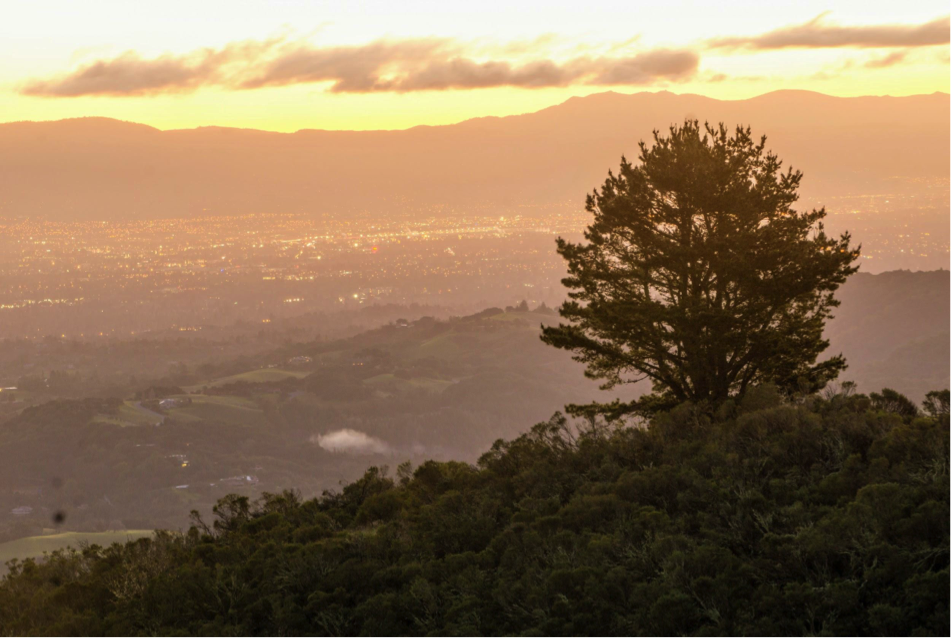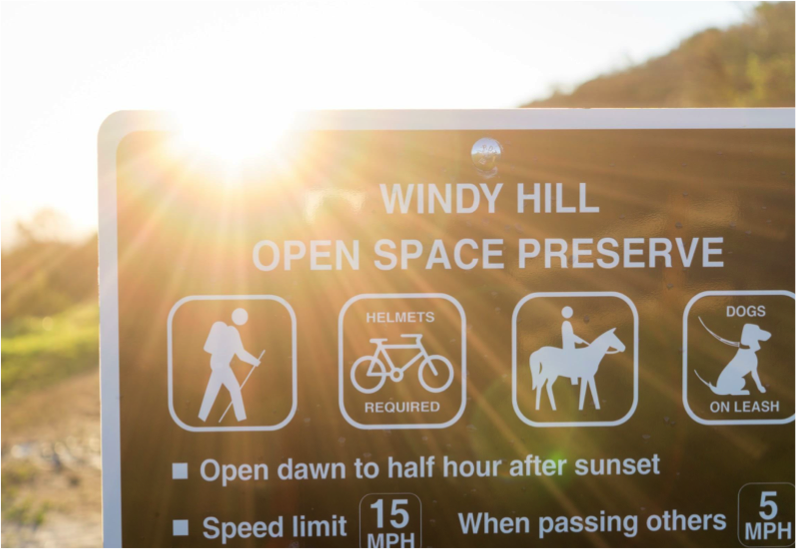At 5:30 a.m., before the sun stretched its arms over the horizon, I sat atop Windy Hill Open Space Preserve and waited for Silicon Valley to turn gold beneath the rolling hills.
Windy Hill is where techies and grandmothers go to find quiet amidst the multi-million person metropolis of the San Francisco Bay Area. The stillness stirred memories of backyard sunrises from my native habitat, the flower-speckled prairies of Central Wisconsin.

The quiet of the Bay Area’s rolling hills and Wisconsin’s wildflower prairies exist partly because of local movements to protect the beauty in our own backyards.
When it comes to conservation, we often think of iconic national parks like Yosemite or Yellowstone, protected and cared for by our federal government. You may have heard of Bears Ears, a new national monument designated in the Obama administration’s last days, but threatened in the early days of Trump’s.
As important as these huge parks and monuments are, smaller, local and private conservation efforts are crucial too. Nearly 17 million acres — an amount of land larger than West Virginia — is protected through private means in the United States.
With a federal administration that seems set to cut funding for federal conservation, and perhaps even privatize federal lands, this kind of “backyard conservation” may become more crucial than ever.
Backyard conservation evolved from the idea that property owners can voluntarily give up the development rights of their land. Local land trusts, like the Peninsula Open Space Trust (POST) in Palo Alto, collaborate with the landowners to ensure that they can continue using their land, whether for farming, photography or observing a golden sunrise.
This agreement is called a conservation easement. In donating or selling a conservation easement, landowners receive the knowledge that their land will be free from roads, buildings and construction far into the future, while maintaining ownership of the property.
Conservation easements as tools for preservation didn’t emerge until the 1980s, when federal tax incentives made them even more appealing to large landholders. Their use has been on the rise ever since, and the amount of land protected by easements has more than doubled since 2005.
Windy Hill Open Space Preserve provides an example of private conservation for public enjoyment. But not all conservation easement properties allow sunrise gazing within their borders.
Sometimes, they aren’t intended for human enjoyment at all.

Nearly 2,000 miles away from Windy Hill sits a farm town in Central Wisconsin, where a conservation easement has transformed one man’s backyard into 500 acres of permanently protected butterfly habitat.
Bob Welch is a tree-climbing wildlife advocate and seventh-grade biology teacher at the town’s only middle school. Atop his head is a blaze-orange beanie, not for hunting, but so hunters don’t mistake him for a whitetail deer as he frolics through the wilderness near Waupaca, Wisconsin.
After conducting ecological surveys in his own backyard over the past ten years, he and a team of student-researchers discovered populations of several endangered species, including the Karner Blue Butterfly, an insect that depends on perennial wildflowers of Midwestern prairies.
“We knew we had something here to save,” Welch said.
Although protecting wildlife is Welch’s motivation for backyard conservation, open space is also part of our own critical habitat.
“I think of the 1.2 million acres around the Bay Area as our life support system,” said Steve Abbors, regional director of the Midpeninsula Open Space Trust in Los Altos.
This life support system includes plants that create oxygen through photosynthesis, purify water with their roots and provides us with food.
“We all benefit from the land whether or not you are an actual user of the land,” said Nicole Heller, director of conservation science at POST.
You don’t have to be a hiker, photographer or Karner Blue Butterfly to enjoy the value of protected lands. It is simple: if you breathe air, you need open space. “That’s not as widely understood as it needs to be,” Abbors said.
Although the new administration has plans to cut funding for conservation and slash environmental regulations, organizations like POST are feeling more obligated than ever to conserve these valuable resources.
“Everyone realizes that we have to take things into our own hands,” said Matt Dolkas, content marketing manager at POST.
Dolkas feels confident that as a private organization, POST can continue working with landowners to conserve land in the Bay Area.
In fact, POST has seen an increase in monetary donations since the new administration took office. “I think people are really stepping up for causes they care about,” Heller said.
From Central Wisconsin to Silicon Valley, local land protectors are working hard to conserve open spaces so that we can continue to appreciate golden sunrises and breath clean air. In 2015 alone, local, state and national land trusts conserved 5,000 acres per day through backyard conservation efforts.
But the best part about this movement is that everyone can participate, even if you don’t own acres of rolling hills or precious butterfly habitat.
My own experience with backyard conservation began almost 10 years ago, amidst the waist-high wildflowers of Welch’s protected prairie. I spent my middle school summers walking 500-meter transects of tick-friendly grassland, counting little blue butterflies and recording them in a leather field notebook.
Because of the conservation easement, my experience felt indefinite. Hundreds of years down the line, another awkward middle school girl could feel at peace among the same silence and golden hue of pine needles at sunset.
“Our species has a lot of control over the planet,” Abbors pointed out. “Let’s use it in the most intelligent way possible.”
I can’t think of anything more intelligent than a sunrise at Windy Hill, year 3017.
